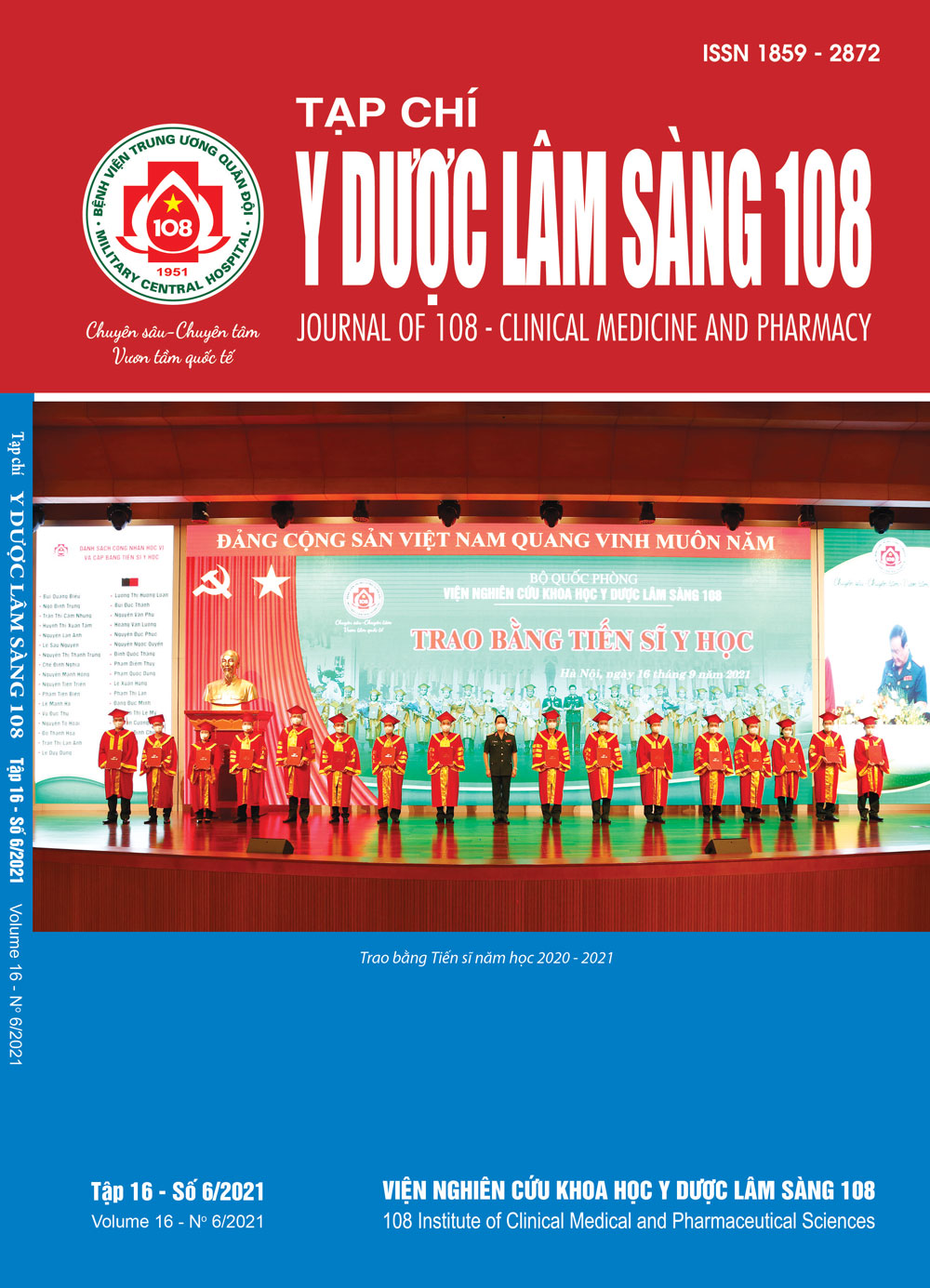Diagnostic value of serum heart-type fatty acid-binding protein (H-FABP) levels in patients with ST-segment elevation myocardial infarction
Main Article Content
Abstract
Objective: To study the diagnostic value of H-FABP serum concentration in ST-segment elevation myocardial infarction (STEMI). Subject and method: A descriptive, cross-sectional study, 146 STEMI patients were admitted to 175 Military Hospital from 09/2017 to 06/2020 and 146 subjects in the control group, quantification of H-FABP at the admission time. Result: The diagnostic value of H-FABP in STEMI: AUC 0.945, sensitivity 88.4%, specificity 95.2%, cut-off point was 6.00ng/ml, the AUC and the sensitivity of H-FABP were lower than those of hs-TnT but the specificity was higher (95.2% vs 80.8%), AUC, sensitivity, specificity were higher than those of CK-MB. According to hospital admission time: Subjects admitted within 3 hours and over 3 - 6 hours after the onset of symptoms, H-FABP had the highest value in diagnosis with AUC of 0.956 and 0.979, respectively, higher than hs-TnT and CK-MB. Group of patients admitted over 6 to 12 hours and over 12 hours; diagnostic value of H-FABP gradually decreased with AUC 0.962 to 0.891, respectively; lower than hs-TnT, and CK-MB (> 12 hours group). Specificity of H-FABP was higher than Hs-TnT and CK-MB. Conclusion: H-FABP has high value in diagnosing STEMI, especially in subjects who were admitted to hospital before 6 hours. At later times, H-FABP may be possible to consider adding test with hs-TnT and CKMB due to its high specificity.
Article Details
References
2. Mythili S, Malathi N (2015) Diagnostic markers of acute myocardial infarction. Biomedical reports 3(6): 743-748.
3. Aydin S, Ugur K, Aydin S et al (2019) Biomarkers in acute myocardial infarction: Current perspectives. Vascular health and risk management 15: 1-10.
4. Glatz J, Putten R, Hermens W (2003) Fatty acid binding protein as an early plasma marker of myocardial ischemia and risk stratification. Cardiac Markers: 319-337.
5. Giao Thị Thoa (2018) Nghiên cứu nồng độ H-FABP trong chẩn đoán và tiên lượng nhồi máu cơ tim cấp. Luận án tiến sĩ Y học, Đại học Y học Huế.
6. Correia LCL, Garcia G, Kalil F et al (2014) Prognostic value of TIMI score versus GRACE score in ST-segment elevation myocardial infarction. Arquivos brasileiros de cardiologia 10(2): 98-106.
7. Huỳnh Kim Phượng, Trương Thành Viễn (2016) Đặc điểm lâm sàng và cận lâm sàng bệnh nhân từ 45 tuổi trở lên bị nhồi máu cơ tim cấp kèm đái tháo đường typ 2. Y học TP. Hồ Chí Minh, phụ bản tập 20, số 2.
8. Banu S, Tanveer S, Manjunath CN (2015) Comparative study of high sensitivity troponin T and heart-type fatty acid-binding protein in STEMI patients. Saudi Journal of Biological Sciences 22(1): 56-61.
9. Gami BN, Patel DS, Haridas N et al (2015) Utility of heart-type fatty acid binding protein as a new biochemical marker for the early diagnosis of acute coronary syndrome. J Clin Diagn Res 9(1): 22-24.
10. Liou K, Ho S, Ooi SY (2015) Heart-type fatty acid binding protein in early diagnosis of myocardial infarction in the era of high-sensitivity troponin: Asystematic review and meta-analysis. Ann Clin Biochem 52(3): 370-381.
11. Chen L, Guo X, Yang F (2004) Role of heart-type fatty acid binding protein in early detection of acute myocardial infarction in comparison with cTnI, CK-MB and myoglobin. J Huazhong Univ Sci Technolog Med Sci 24(5): 449-451, 459.
12. Willemsen RT, van Severen E, Vandervoort PM et al (2015) Heart-type fatty acid binding protein (H-FABP) in patients in an emergency department setting, suspected of acute coronary syndrome: optimal cut-off point, diagnostic value and future opportunities in primary care. Eur J Gen Pract 21(3): 156-163.
 ISSN: 1859 - 2872
ISSN: 1859 - 2872
